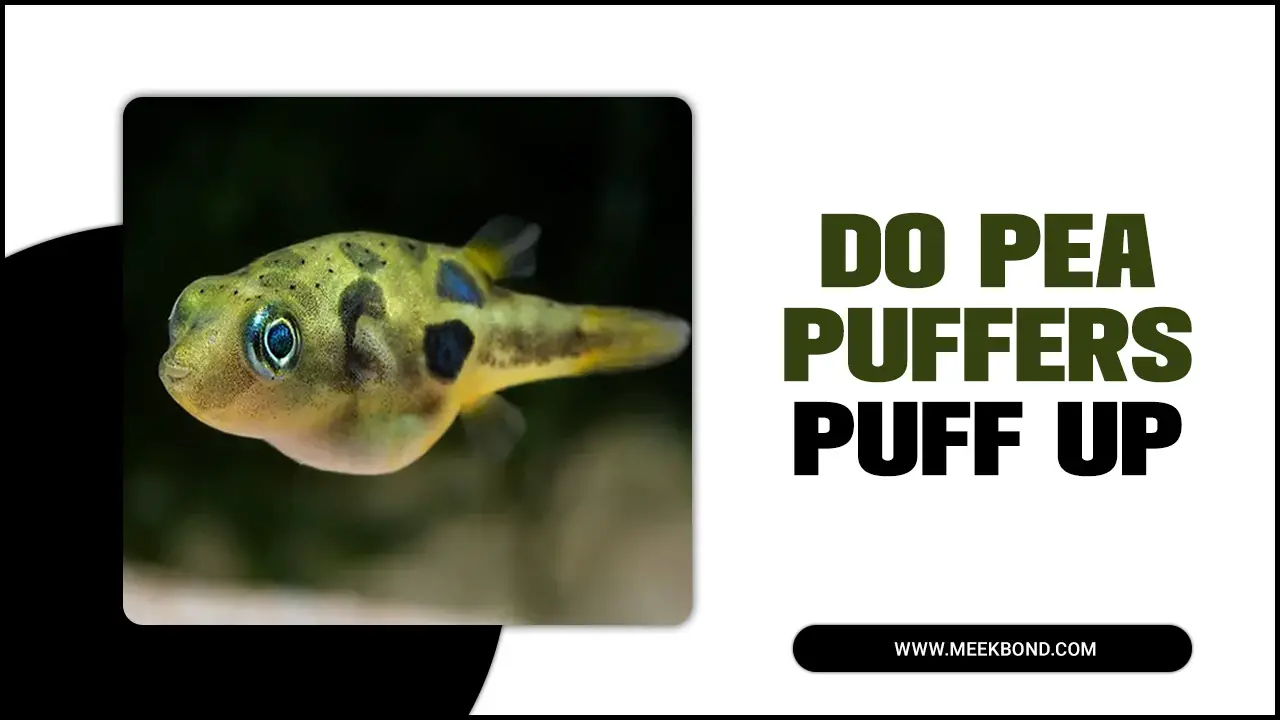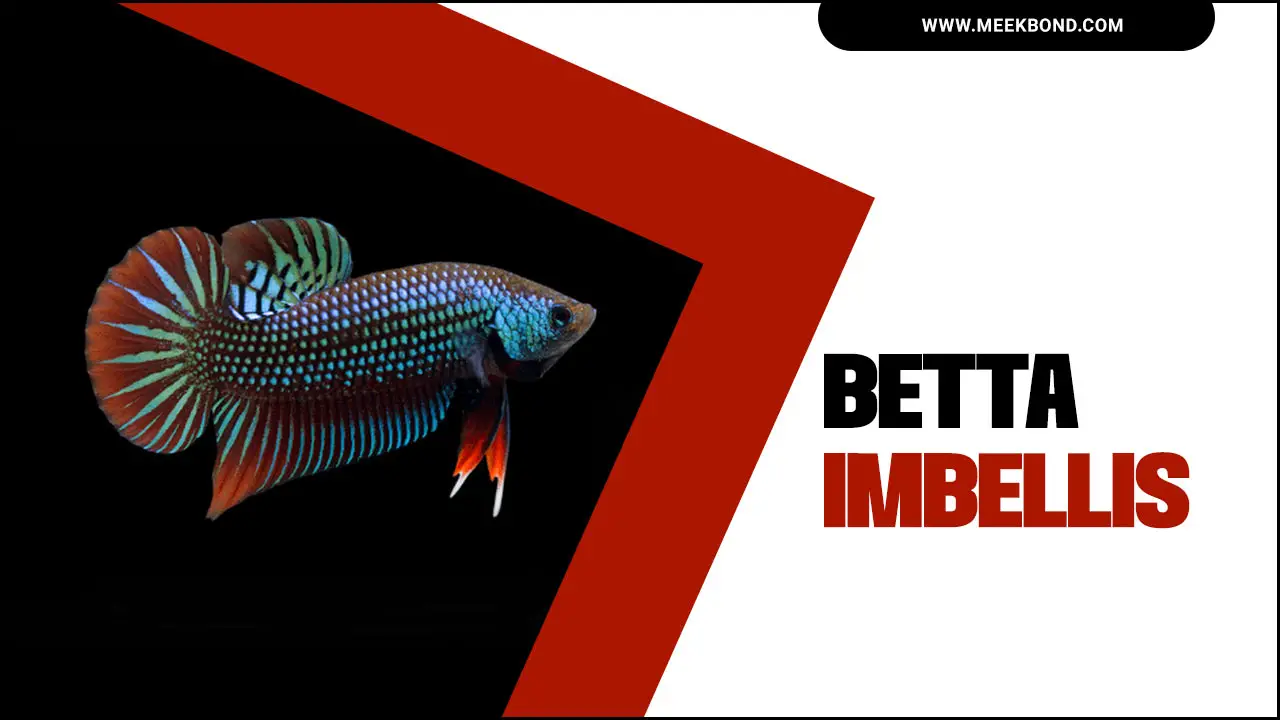Black Bluegill, also known as melanistic bluegill, is a color variation of the common bluegill fish species. Unlike the typical bluegill with a blue-green body with dark vertical bars on its sides, Black-Bluegill has a predominantly black or dark brown coloration.
This unique coloring is caused by an excess of melanin pigment in their skin cells. While Black-Bluegill is less common than their traditional counterparts, they can be found in certain bodies of water where this color variation occurs naturally. Some anglers and fish enthusiasts find the Black-Bluegill particularly intriguing and seek them out for their aesthetic appeal.
Here we take you on a journey to discover all there is to know about these unique fish, known for their distinctive physical characteristics and popularity as sport fish. So, if you’re keen to learn more about this intriguing fish species, let’s dive into the world of Black-Bluegill fishing together.
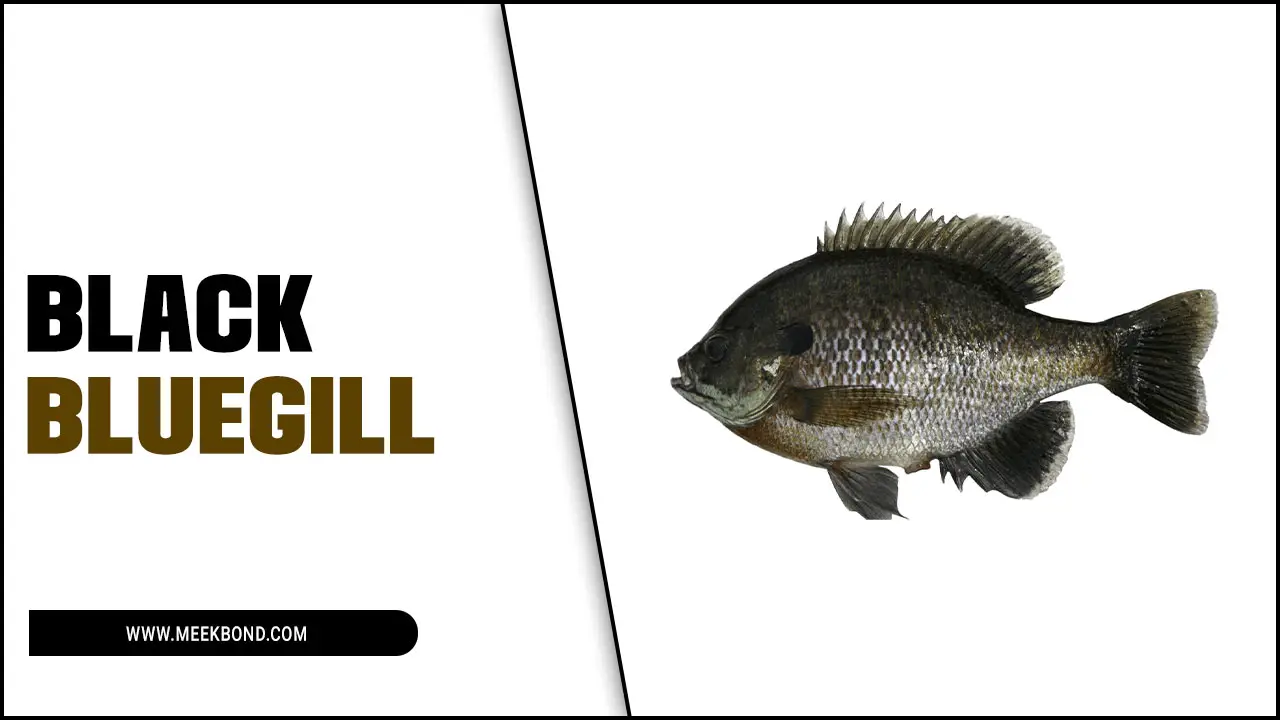
Discussion On- The Intriguing World Of Black Bluegill
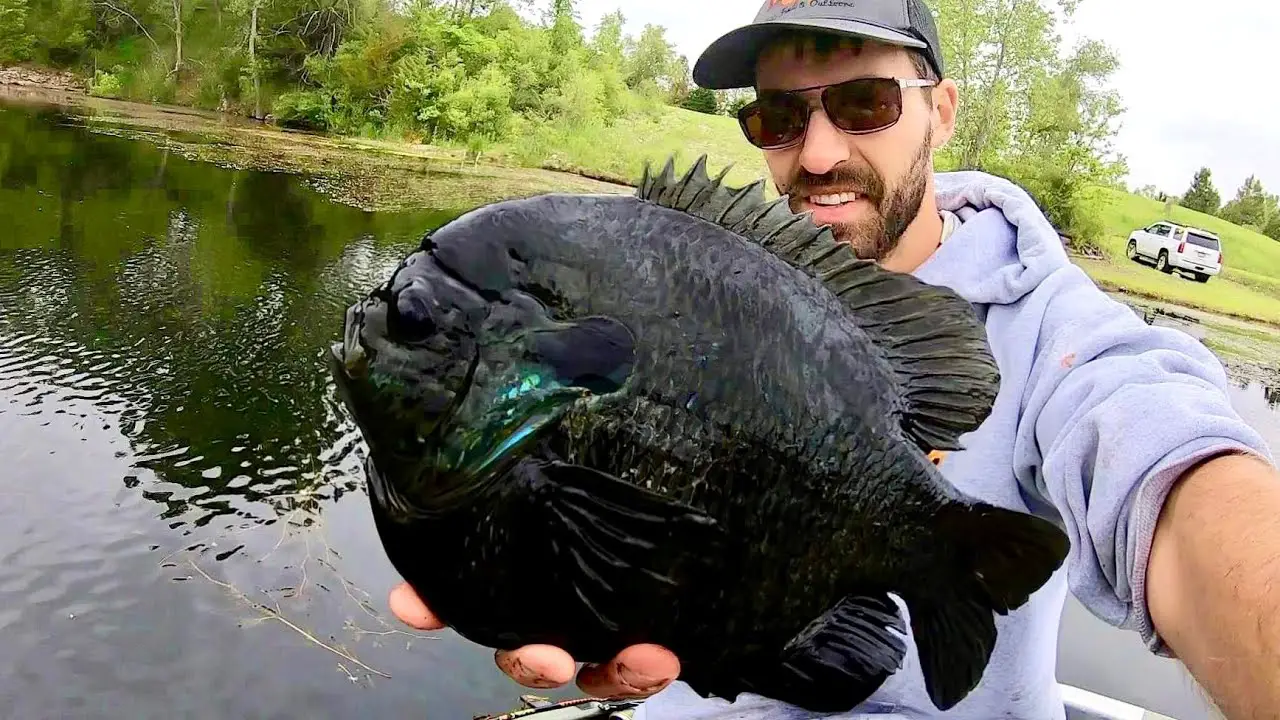
Black Bluegill fishing offers a unique experience for avid anglers. These fascinating fish can be found in various water bodies across the United States and Mexico, making them sought-after catches. Using the right bait and tackle, such as small jigs, worms, or crickets, is crucial for success.
Practising catch-and-release is essential for conservation and maintaining their population. Respecting fishing regulations and guidelines helps preserve their natural habitat. While Black-Bluegill fishing has its challenges, the rewards are unmatched.
Anglers should use light spinning rods, small hooks, and natural baits like worms or crickets to catch them. During colder months, they move to deeper waters, while in warmer seasons, they can be found near shallow areas with vegetation and structure. When cooking Black-Bluegill fish, simplicity is best.
Grilling, pan-frying, or baking are popular methods. Conserving their populations is important, and anglers can contribute through catch-and-release fishing and following fishing regulations. Get ready to explore this intriguing world with proper gear and regulations.
Physical Characteristics And Appearance Of The Black-Bluegill

The Black-Bluegill exhibits unique physical characteristics and a striking appearance. Its body is round and thick, with a small mouth and a dorsal fin positioned towards the back. This species stands out among freshwater fish, sporting a dark, almost black colouration with hints of blue and green. Its large, dark eyes contribute to its exceptional prey detection and predator evasion abilities. During mating season, males boast vibrant and alluring colors to attract females.
This distinct appearance makes the Black-Bluegill a popular choice among anglers in North America, particularly in the United States and Mexico. With its captivating features and charming allure, it’s no wonder why the Black-Bluegill has become a sought-after catch for freshwater fishing enthusiasts.
Habitat And Ecological Role Of Black-Bluegill
Black-Bluegill is native to freshwater habitats in the eastern United States. They play a crucial role in maintaining ecological balance by preying on smaller organisms. These fish thrive in shallow waters with vegetation and structure for cover, providing protection and allowing them to flourish. Anglers targeting Black-Bluegill should be aware of their selective feeding habits.
Using live bait or lures that mimic their natural prey can be effective. However, it’s important to follow local regulations and conservation efforts to ensure the sustainability of their populations. Understanding the habitat and ecological role of Black-Bluegill helps anglers appreciate the unique qualities and challenges associated with fishing for this species.
Feeding Habits And Diet Of The Black-Bluegill
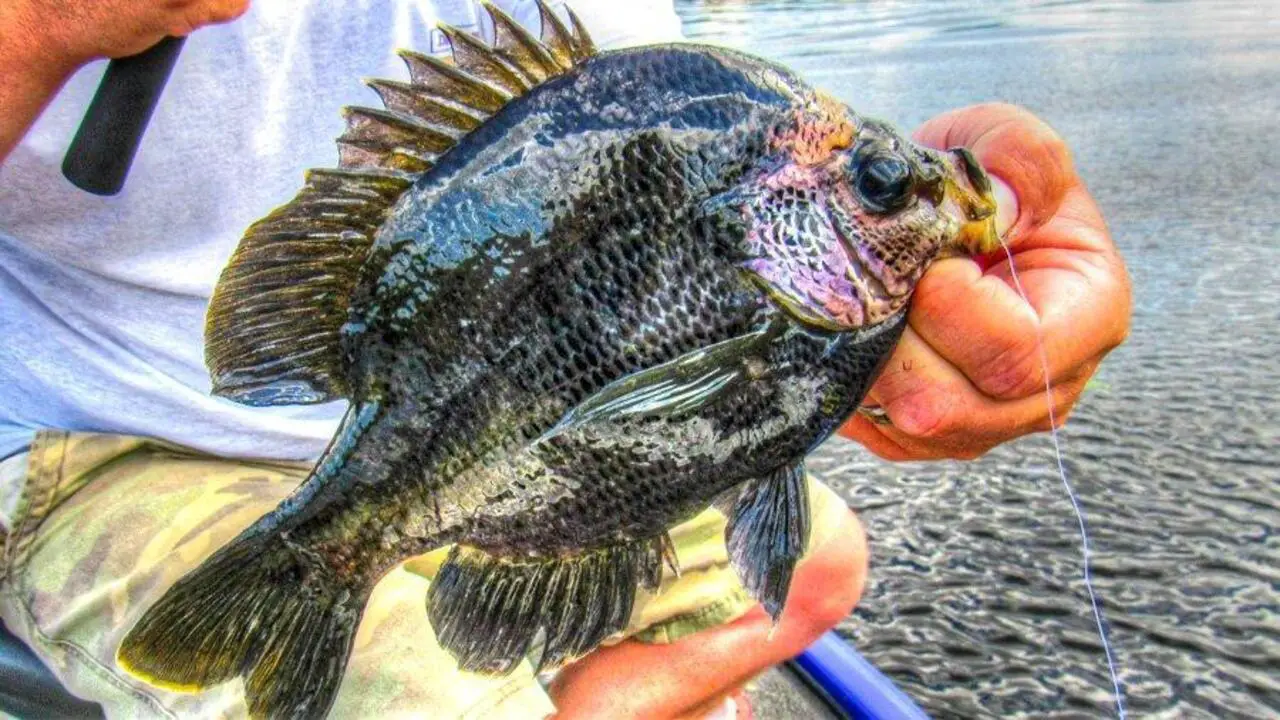
The Black-Bluegill has a diverse feeding habit consisting primarily of small insects, invertebrates, and aquatic plants. These opportunistic feeders will consume whatever is available in their habitat, adapting their diet accordingly. Younger Black-Bluegill mainly relies on zooplankton and insect larvae for sustenance.
However, as they mature, their diet shifts towards a more carnivorous nature, with small fish and crustaceans becoming their prey of choice. It is essential for anglers to understand the feeding habits of Black-Bluegill as it helps them select the appropriate bait and lures for a successful fishing experience. By utilizing this knowledge, anglers can increase their chances of attracting Black-Bluegill and enjoy a fruitful fishing excursion.
Growth Rate And Size Potential Of The Black-Bluegill
Black-Bluegill has fascinating growth rates and size potential. They can reach impressive lengths of up to 10 inches and weigh over a pound. However, their growth can vary based on food availability and water temperature. With abundant food and warmer water, they can grow faster.
On average, they reach maturity in 2-3 years and display vibrant colors with the right habitat and nutrition. We encourage catch-and-release practices to sustain their populations. Understanding their growth rate and size potential can enhance fishing experiences and contribute to conservation efforts.
Popular Fishing Techniques For Catching Black-Bluegill
When targeting Black-Bluegill, using small hooks and light lines is important. These should mimic the natural food of Black-Bluegill, increasing the chances of a successful catch. Fishing in shallow waters is also recommended, especially around structures like logs or rocks where Black-Bluegill often hide.
These fish are attracted to live bait, such as worms or small insects. Utilizing these baits can help entice Black-Bluegill to bite. Additionally, artificial lures like small jigs or spinners can effectively catch Black-Bluegill. However, it is essential to be patient and move slowly while fishing for Black-Bluegill, as they can easily be spooked.
Tips For Locating And Targeting Black-Bluegill Fish
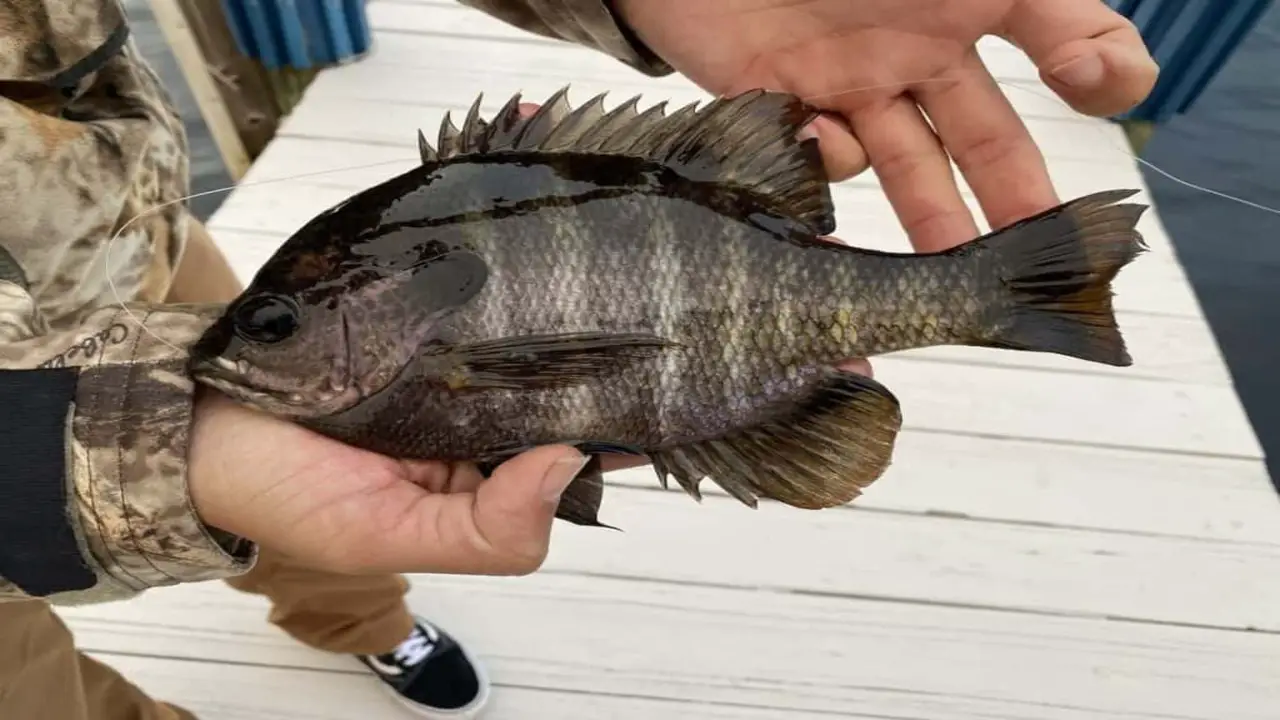
Locating and targeting Black-Bluegill fish can be important for several reasons. First and foremost, Black-Bluegill is popular for its larger size and aggressive nature, making them a prized catch among anglers. By specifically seeking out these fish, anglers can increase their chances of landing a trophy-sized catch. To locate and target Black-Bluegill populations successfully, follow these tips:
- Look for areas with structures like rocks, fallen trees, and weed beds where Black-Bluegill hide in both clear and murky waters with vegetation.
- To entice bites, Use small baits such as worms or crickets that mimic their natural prey.
- Fish during early morning or late afternoon when the sun is low, as Black-Bluegill are more active.
- Be patient and persistent, as Black-Bluegill can be easily spooked. Use a slow and steady approach for better results.
Conservation Efforts For Protecting Black-Bluegill Populations
Conservation is crucial for protecting Black-Bluegill populations. Habitat loss and overfishing have led to their decline. To safeguard these fish, focus on restoring their natural habitats like lakes, ponds, and streams. Fishing regulations, such as size limits and catch-and-release, can help maintain healthy populations.
Promoting public awareness and education about Black-Bluegill’s ecological role is vital. Collaboration between fisheries, researchers, and local communities is key for effective conservation strategies. Protecting this fascinating species requires concerted efforts in habitat conservation, fishing regulations, public awareness, and collaborations.
Black-Bluegill As A Sport Fish- Challenges And Rewards
Anglers are drawn to the challenge and rewards of Black-Bluegill fishing. These elusive fish put up a fight that requires patience, skill, and a bit of luck. Catching a Black-Bluegill is an accomplishment that brings satisfaction and the potential to set a personal record.
To be successful in Black-Bluegill fishing, strategic bait and lure selection is crucial, as well as knowing the best times and locations to fish. Anglers, both seasoned and beginners, can find excitement and enjoyment in the challenge that Black-Bluegill fishing provides.
How To Catch Black-Bluegill Using Live Bait?
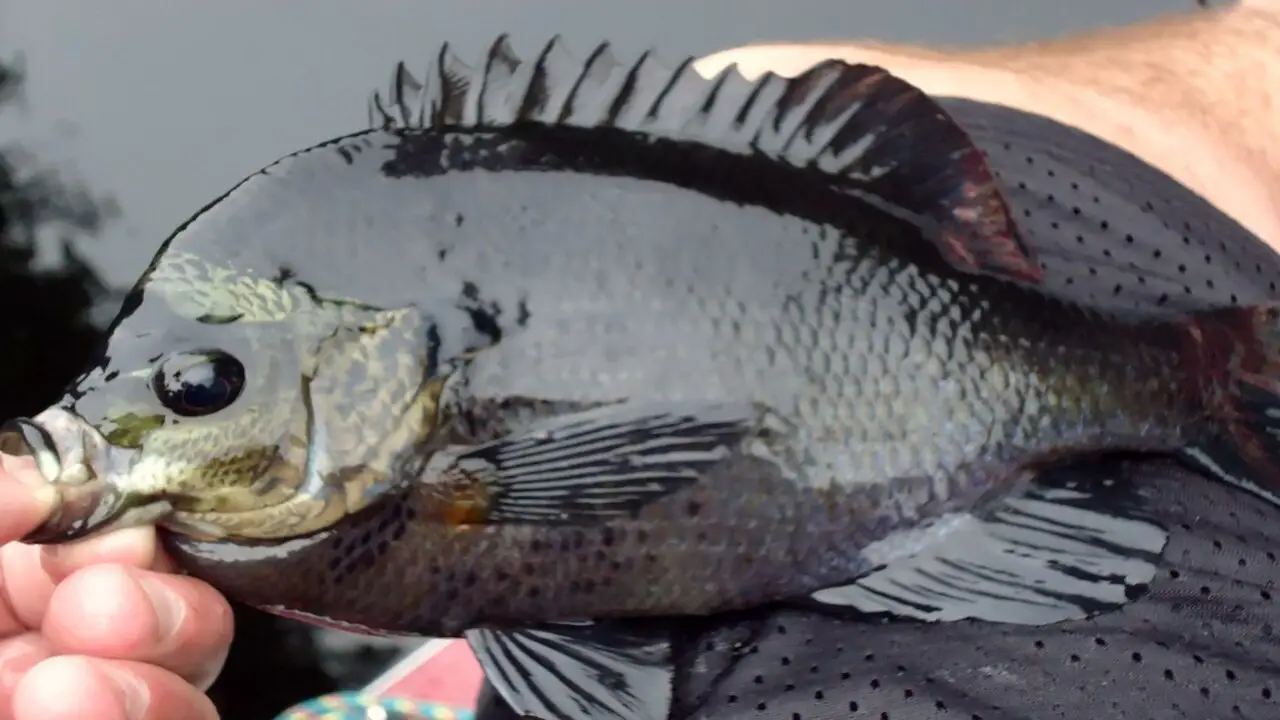
There are a few key things to keep in mind to catch Black-Bluegill using live bait. First, it’s important to use the right type of bait – worms, crickets, or grasshoppers all work well. Use a small hook with a float attached to detect bites and fish in shallow waters near shorelines, docks, or vegetation where Black-Bluegill tend to feed. When you feel a bite, slowly reel in the line and set the hook firmly to ensure a successful catch. Remember that Black-Bluegill can be elusive, so patience and persistence are key to catching these prized fish.
The Best Bait For Black-Bluegill
To target Black-Bluegill effectively, use the right bait. Live bait like worms, crickets, and grasshoppers work well as they mimic their natural prey. Artificial lures such as small jigs, soft plastics, and crankbaits can also be effective. Fly fishing enthusiasts can try small flies and nymphs. Experimentation is key to finding the best bait and presentation for your location. Check local fishing regulations and get the licenses before your Black-Bluegill fishing adventure.
Where To Find Black-Bluegill
To locate Black-Bluegill, look for clear, shallow lakes and ponds with abundant vegetation. These fish gather around underwater structures like logs, rocks, and weed beds. Increase your chances of success by fishing during the early morning or late evening hours, when Black-Bluegill are more active.
Regarding bait, live options such as worms or crickets can effectively attract these fish. To ensure a successful catch, using light tackle and employing a slow, steady retrieve is important. By following these tips, you’ll be well on your way to finding Black-Bluegill in their preferred habitats.
How Can You Identify Black-Bluegill?
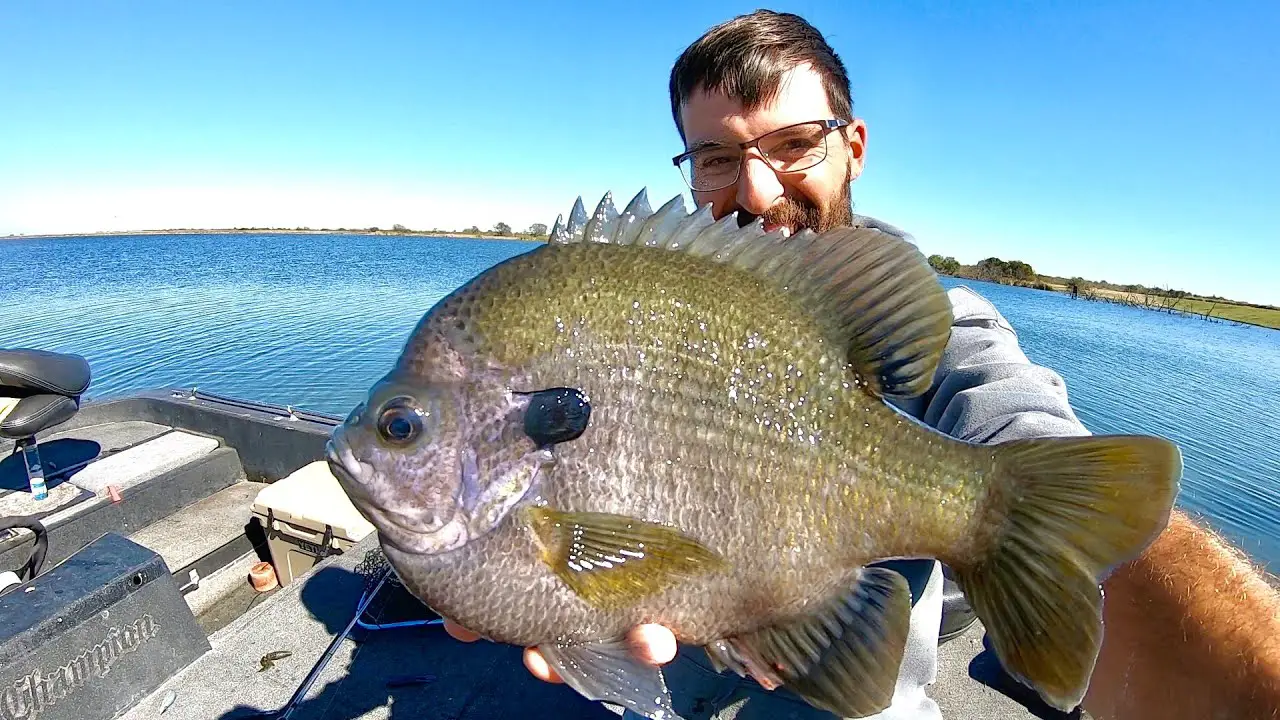
Black-Bluegills are easily recognizable by their distinct appearance, which includes a dark, almost black color with striking blue accents around their gills and fins. Their sides feature unique vertical bars or lines that distinguish them from other fish.
Additionally, Black-Bluegills have a more flattened and rounded head shape than other types of bluegill. These physical characteristics make them an exciting catch for anglers and a fascinating species to observe in their natural habitat.
Conclusion
Black Bluegill fishing is a fascinating and rewarding experience for anglers. These unique fish have distinct physical characteristics and can be found in various habitats across their distribution range. Understanding their feeding habits and growth potential is crucial for successful fishing.
Practising responsible fishing techniques and supporting conservation efforts to protect Black-Bluegill populations is important. When targeting Black-Bluegill, using live bait and knowing where to find them are key. Following these tips and tricks can enhance your chances of catching these elusive fish. So grab your fishing gear and head out to the water for an exciting adventure in Black-Bluegill fishing.
Frequently Asked Questions
Can Bluegills Be Black?
Yes, bluegills can be black in color. This rare genetic variation creates Black-Bluegills, commonly found in deeper, darker waters. Anglers often find catching a Black-Bluegill to be a unique and exciting experience.
Why Would A Bluegill Be Black?
Bluegills can appear black due to genetic factors or environmental influences. Some bluegills have a genetic mutation called melanism, causing their dark coloration. Additionally, water conditions and available food sources can contribute to bluegills’ black appearance.
What Is The Black Parasite In Bluegill?
The black parasite found in bluegill is a type of trematode worm. These harmless worms can affect the health of fish, causing black spots or discoloration on their skin and fins. Properly cleaning and cooking any caught fish helps prevent the spread of parasites.
Why Are Bluegill Different Colors?
Bluegill can display various colors, such as blue, green, yellow, and orange. These hues are influenced by genetics and the fish’s environment. Additionally, bluegill can change color based on stress levels or the water they inhabit.
Does Black-Bluegill Really Work?
Yes, Black-Bluegill lures can be effective in catching bluegill fish. These lures mimic the appearance and behavior of real bluegill fish, attracting nearby bluegills. However, their success may depend on water temperature, time of day, and location.

Aquarium passion is all about connecting with the aquatic life and providing education to the public on the importance of these creatures. We showcase a wide variety of marine life through our exhibits as well as working with schools to provide unique learning opportunities for students of all ages.


